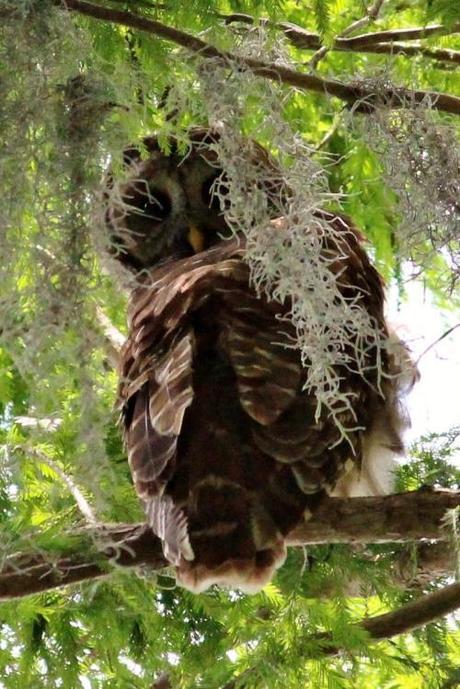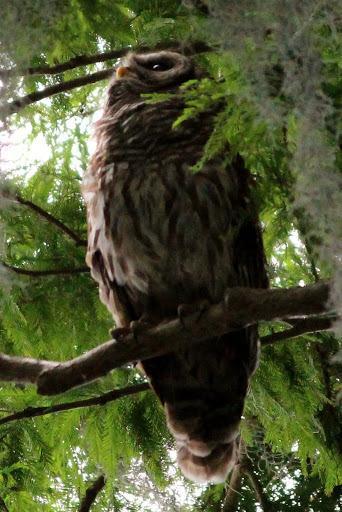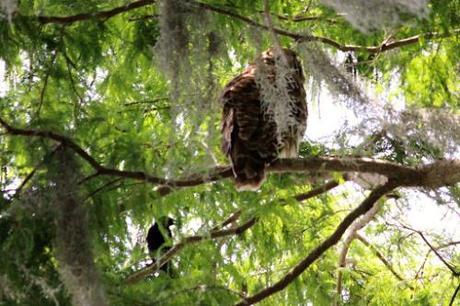Strix varia


 Pics by Musicwolf, taken in Lakeland, Florida (h/t Project Noah)
Pics by Musicwolf, taken in Lakeland, Florida (h/t Project Noah)
The Barred Owl (Strix varia) is a large owl native to North America. Best known as the Hoot Owl for its distinctive call, it goes by many other names, including Eight Hooter, Rain Owl, Wood Owl, and Striped Owl.
The adult is 16–25 in long with a 38–49 in wingspan and weight of 1.10 to 2.31 lb). It has a pale face with dark rings around the eyes, a yellow beak and brown eyes. It is the only typical owl of the eastern United States which has brown eyes; all others have yellow eyes. The legs and feet are covered in feathers up to the talons. The head is round and lacks ear tufts.
The Barred Owl’s breeding habitats are dense woods across Canada; E., S.E., and N.W. United States; and Mexico. Recent studies show suburban neighborhoods can be ideal habitat for barred owls. Using transmitters, scientists found that populations increased faster in the suburban settings than in old growth forest, due probably to easily accessible rodent prey. However, for breeding and roosting needs, the Barred Owl needs at least some large trees. The main danger to owls in suburban settings is from cars.
The Barred Owl’s nest is often in a tree cavity, often old nests of woodpeckers, hawks, crows or squirrels. If a nest site has proved suitable in the past the Barred Owl will often reuse it as the birds are non-migratory. In the United States, eggs are laid from early-January in southern Florida to mid-April in northern Maine, and consist of 2 to 4 eggs per clutch. Eggs are brooded by the female with hatching taking place approximately 4 weeks later. Young owls fledge four to five weeks after hatching.
Barred Owls have few predators. Their most significant predator is the Great Horned Owl; young, unwary Barred Owls may be taken by cats. The Barred Owl has been known to live up to 10 years in the wild and 23 years in captivity.
~Eowyn

